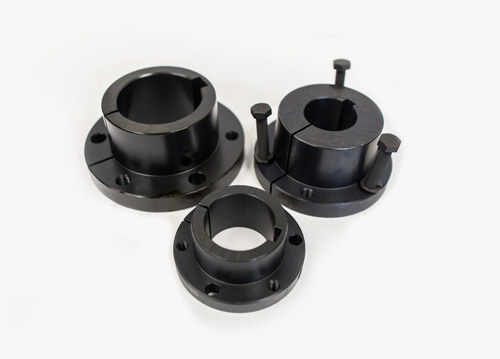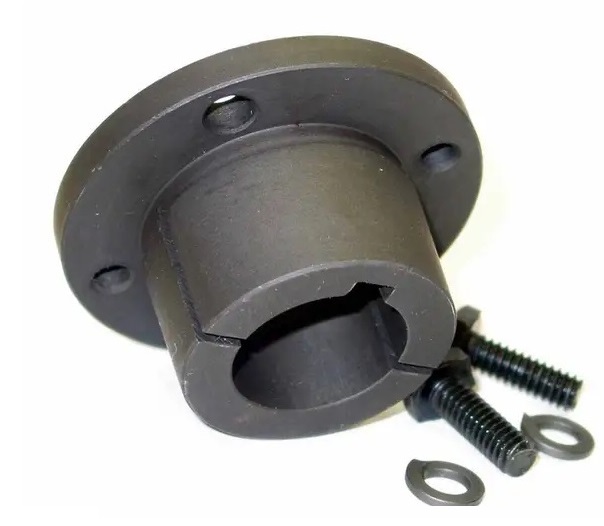What are the temperature and environmental considerations when using QD bushings?
When using QD (Quick Disconnect) bushings, it is important to take into account temperature and environmental factors to ensure their optimal performance and longevity. Here are some key considerations regarding temperature and environmental conditions:
- Temperature Range: QD bushings are typically designed to operate within specific temperature ranges. It is crucial to understand the temperature limits specified by the manufacturer for the particular type and material of the bushing. Exceeding these temperature limits can lead to premature wear, reduced load capacity, dimensional changes, or even failure of the bushing. Extreme heat or cold can affect the material properties, lubrication, and overall functionality of the bushing.
- Operating Environment: The operating environment plays a significant role in determining the performance and durability of QD bushings. Factors such as moisture, humidity, dust, chemicals, and corrosive substances can impact the bushing’s performance and lifespan. In corrosive environments, it is essential to select bushings made from materials that offer resistance to corrosion or consider additional protective measures such as coatings or seals. Similarly, in dusty or dirty environments, regular cleaning and maintenance are necessary to prevent contaminants from impairing the bushing’s operation.
- Lubrication: Proper lubrication is critical for the smooth operation and longevity of QD bushings. The selection of lubricant should take into account the anticipated temperature range, operating conditions, and the manufacturer’s recommendations. Lubrication helps reduce friction, wear, and heat generation within the bushing, ensuring efficient power transmission and preventing premature failure. Regular lubrication maintenance should be carried out as per the manufacturer’s guidelines.
- Load and Speed: The temperature of QD bushings can be influenced by the magnitude of the applied load and the rotational speed. Higher loads and speeds generate more heat, which can impact the temperature of the bushing and its surrounding components. It is important to consider these factors and select QD bushings that are capable of handling the anticipated loads and speeds within the specified temperature range.
- Vibration and Shock: Excessive vibration and shock can affect the performance and reliability of QD bushings. Vibrations can cause fretting, loosening, or misalignment of the bushing, leading to increased wear and reduced service life. If the application involves significant vibration or shock loads, it is important to select QD bushings that are designed to withstand such conditions or consider additional measures such as using locking compounds or supplementary fasteners to enhance the bushing’s stability.
It is crucial to consult the manufacturer’s documentation, guidelines, and specifications for the specific QD bushings you are using. They will provide detailed information on temperature limits, environmental considerations, and any particular requirements or recommendations for the bushing’s operation and maintenance.
By considering temperature and environmental factors, selecting appropriate materials, ensuring proper lubrication, and addressing specific application requirements, you can maximize the performance and lifespan of QD bushings in your mechanical systems, contributing to their overall reliability and efficiency.
Can I get recommendations for QD bushings with corrosion-resistant properties for outdoor applications?
When it comes to outdoor applications where corrosion resistance is a concern, there are several QD (Quick Disconnect) bushing options available that offer enhanced protection against corrosion. Here are some recommendations for QD bushings with corrosion-resistant properties suitable for outdoor applications:
- Stainless Steel QD Bushings: Stainless steel QD bushings are highly recommended for outdoor applications due to their excellent corrosion resistance. They are resistant to rust and can withstand exposure to moisture, humidity, and various weather conditions. Stainless steel QD bushings are available in different grades, such as 304 and 316 stainless steel, each offering varying levels of corrosion resistance. These bushings are commonly used in outdoor equipment, such as agricultural machinery, construction equipment, and outdoor conveyors.
- Plated or Coated QD Bushings: Some QD bushings are coated or plated with corrosion-resistant materials to enhance their durability in outdoor environments. Common coatings include zinc plating, nickel plating, or epoxy coatings. These coatings provide a protective barrier against moisture, chemicals, and atmospheric conditions, reducing the risk of corrosion. Plated or coated QD bushings are suitable for a wide range of outdoor applications where moderate corrosion resistance is required.
- Polymer or Composite QD Bushings: Certain QD bushings are constructed using polymer or composite materials known for their inherent corrosion resistance. Materials such as nylon, reinforced polymers, or composite alloys can provide excellent resistance to moisture, chemicals, and UV exposure. Polymer or composite QD bushings are lightweight, non-conductive, and often self-lubricating, making them suitable for outdoor applications where corrosion resistance, low friction, and electrical insulation are essential.
- Aluminum QD Bushings: While aluminum is not as corrosion-resistant as stainless steel, it can still provide satisfactory performance in certain outdoor applications. Aluminum QD bushings are lightweight, have good mechanical strength, and offer moderate resistance to corrosion. They are commonly used in equipment and machinery where weight reduction is a priority, such as outdoor recreational vehicles, lawn and garden equipment, or portable machinery.
When selecting QD bushings with corrosion-resistant properties for outdoor applications, it is important to consider the specific environmental conditions, exposure to chemicals, temperature variations, and the severity of corrosion factors. Consulting with QD bushing manufacturers or industry experts can provide valuable insights and recommendations based on their knowledge and experience.
Lastly, regardless of the corrosion-resistant properties of the QD bushings, it is important to follow proper maintenance practices and regularly inspect and clean the bushings to ensure their long-term performance and effectiveness in outdoor environments.
By choosing QD bushings with corrosion-resistant properties appropriate for outdoor applications, you can enhance the durability and reliability of your equipment, reducing the risk of premature failure and minimizing maintenance requirements.
Can I get step-by-step instructions on installing QD bushings for different mechanical setups?
While I can provide a general overview of the installation process for QD bushings, it’s important to note that the specific installation steps can vary depending on the mechanical setup and the manufacturer’s guidelines. It is recommended to consult the manufacturer’s instructions and specifications for the specific QD bushing you are using. However, here is a general outline of the steps involved in installing QD bushings:
- Gather the necessary tools and equipment: Before you begin the installation process, ensure you have the required tools and equipment on hand. This may include wrenches, torque wrenches, a mallet or hammer, and any additional components or accessories specified by the manufacturer.
- Prepare the shaft and the mounting component: Clean the shaft and the inner bore of the mounting component to remove any dirt, debris, or old lubricants. Ensure that the shaft surface is smooth and free from any damage or burrs that could interfere with the installation process.
- Inspect the QD bushing: Before installing the QD bushing, inspect it for any visible damage or defects. Ensure that the tapered surfaces and the flange are clean and free from any debris that could affect the installation or the connection with the shaft and the mounting component.
- Position the QD bushing: Place the QD bushing over the shaft, ensuring that it aligns properly with the desired location on the shaft. The flange of the bushing should be facing the mounting component.
- Engage the QD bushing: Apply even pressure to the outer surface of the QD bushing to initiate the engagement. This can be done using a mallet or hammer. Ensure that the bushing is centered and properly seated on the shaft. Avoid applying excessive force that could damage the bushing or the shaft.
- Tighten the QD bushing: Using the specified torque value provided by the manufacturer, tighten the QD bushing by turning the tightening screws or bolts evenly. Follow the recommended tightening sequence provided by the manufacturer to ensure an even and secure connection. Be careful not to over-tighten the bushing, as this can cause damage.
- Verify the installation: After tightening the QD bushing, inspect the connection to ensure that it is secure and properly aligned. Check for any axial movement or play between the bushing, shaft, and mounting component. Verify that the mounted component is positioned correctly and securely fastened to the bushing.
- Complete the installation: Once you have verified the installation, proceed with any additional steps required for your specific mechanical setup. This may involve attaching other components, aligning belts or chains, or performing any necessary adjustments or calibrations.
It’s important to note that the above steps are a general guide and may not cover all possible scenarios or variations. Always refer to the manufacturer’s instructions and guidelines specific to the QD bushing you are using. Following the manufacturer’s recommendations will ensure proper installation and optimal performance of the QD bushing in your mechanical setup.
editor by CX 2024-04-17



